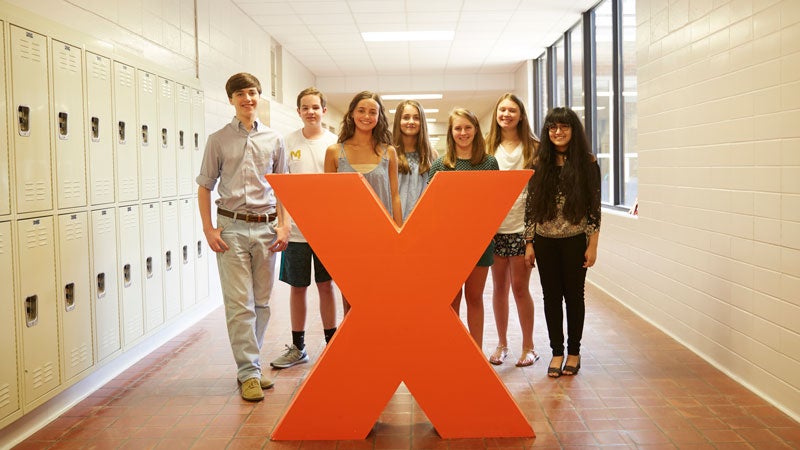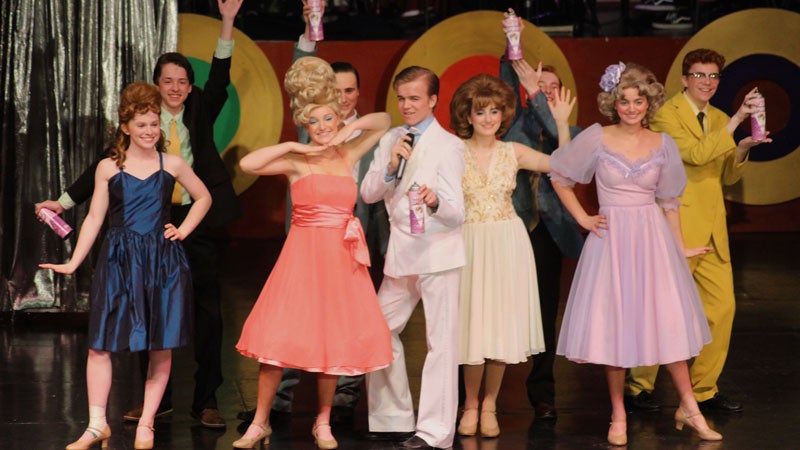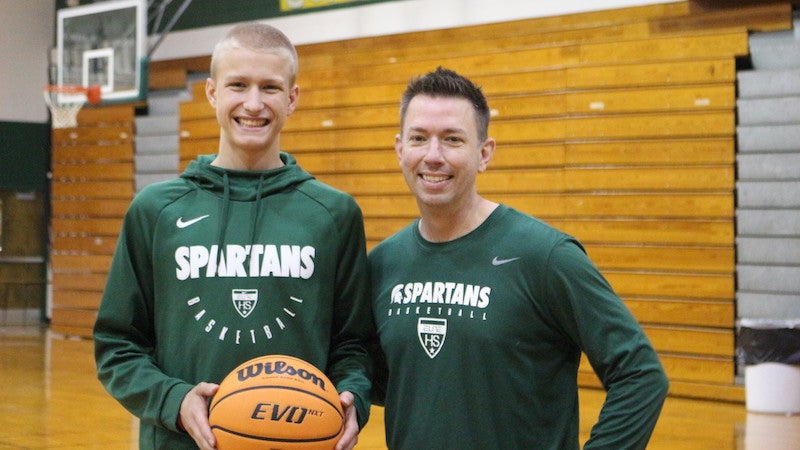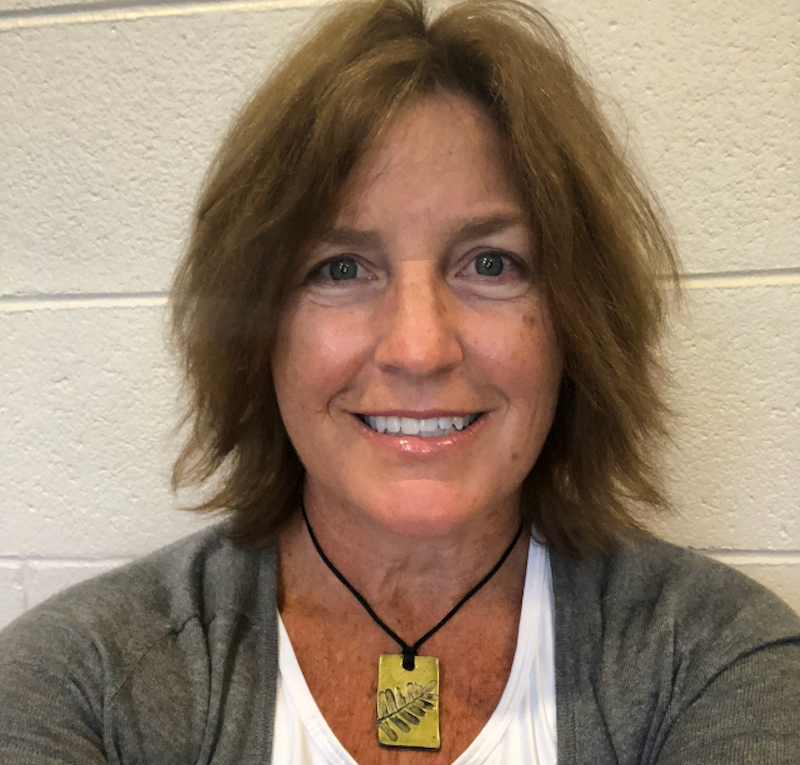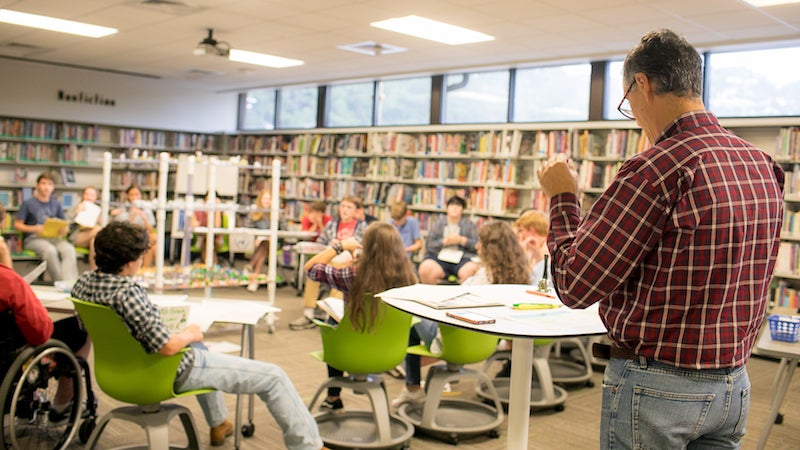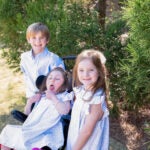Sean Fredella’s opening words on the red TED carpet ring with resilience. “If you don’t know me, I hope you never meet somebody like me again,” he starts. “That’s because I’ve survived cancer four times—four times over the course of seven and a half years.”
Mountain Brook knows his story, but the talk packs it with a punch as a photo pops up on the screen behind him: “I’ve had Leukemia, a bone marrow transplant, chemo, radiation. I’ve had a craniotomy, which is basically a fancy term that doctors use for cutting my head open from this ear to this ear, pulling down my face, then use a drill to pull out the tumor the size of a golf ball. Yeah, fifth grade was not very fun.”
Sean and his friend Brett Lewis were among only 17 students out of hundreds of applicants who were chosen to attend the first TED-Ed weekend last December, a now twice-yearly event that brings together students from TED-Ed youth clubs worldwide to the TED Headquarters in New York City. “I didn’t really know what it was all about until we went to New York. It was really cool, it felt like I was at Google because of all the technology and innovation,” Sean recalls. “I met people from all around the world, which I’d never done before.”
“Being on [the TED] stage, in the headquarters, that was really neat—it was just so incredible being there,” adds Suzan Brandt, Mountain Brook Junior High technology coordinator and TED-Ed Club advisor. “There’s a really strong global TED community, and I want our students to be a part of it. They will be more well-connected as they continue to grow.”
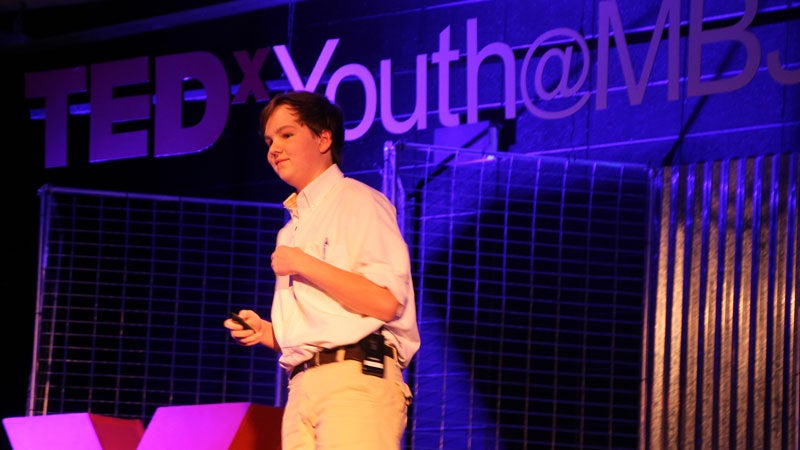
Sean Fredella
Although recorded in New York in December, Sean’s talk at TED-Ed was released online June 7 and quickly went viral, with more than 27,000 views in the first few weeks it was live. In it, the MBHS junior says he cannot help but think of his friends. Friends he met in hospitals or during yearly trips to Camp Smile-A-Mile. Friends who have almost all passed away. “It’s times like these that I wonder why,” the 16 year old says in his talk. “Why me? Out of all of my friends, why did I survive? There has to be a reason.”
Then, he gets to the reason—so he can raise awareness about funding pediatric cancer research, or the lack thereof. “You know, out of all the money raised, the millions, billions of dollars raised to fight all cancers, pediatric cancer only gets 4 percent,” Sean says. “Children die every day from cancer, and they did nothing to deserve it. We need to fight. We need to make a change. We need to have more than four.” That’s where the hashtag comes in—#MoreThan4.
Local Club, Global Connections
The talk started back in the Mountain Brook Junior High TED-Ed Club when Sean was in ninth grade. “Brett [Lewis], Chip Porter and I joined because Mr. [Andrew] Cotten asked us to. He was my favorite teacher,” Sean says. “My mom also thought it was a good opportunity. I’m glad I listened to them.”
Suzan, with help from fellow educators Andrew Cotten and Mariya Breaux, has always made sure her TED-Ed Club students see the impact of TED across the globe. She brings in guest speakers. They watch all kinds of TED Talks and discuss them. She provides new research resources when she discovers them. They connect with other classrooms via Skype and talk about the ideas that other students are working on.
 “I want [my students] to make those global connections and share ideas,” Suzan says. “It’s so cool that kids all over the world are giving each other advice, being so far apart and still knowing they have the same types of ideas across the globe.”
“I want [my students] to make those global connections and share ideas,” Suzan says. “It’s so cool that kids all over the world are giving each other advice, being so far apart and still knowing they have the same types of ideas across the globe.”
“We believe that every student has a great idea–really, all of us do,” she continues, explaining that the club helps individuals parse out what their ideas mean to the students and how to push them further. They brainstorm ideas and concepts before making an outline and then a rough draft. Mini lessons leave them with time to do writing in a shared Google Doc, where everyone in class can make notes to ask questions or help keep the stories on track.
“I like knowing that everyone is on the same page, we’re all following the TED structure,” Suzan says, but she really feels connected to the students in other ways too. “I’ve grown personally and professionally and connected with kids on a level that I did not expect. [The students] have shared things that I did not expect.” Sean, Brett, and a few others in particular have made a huge impact.
Crafting Originality
From the start Sean knew he wanted to talk about the lack of funding in the United States for pediatric cancer, but he was not sure how. “Since it was such a big part of my life, I didn’t know how to make that connection at first.”
“I wanted to establish a tone, and I really wanted to be original,” Sean recalls. Looking to add both comedic and serious parts, he added jokes about being angry like Donald Trump when he was on steroids. That joke in particular got big laughs on stage. “[A TED Talk] really should be a rollercoaster of emotions, and it was really interesting exploring that,” Sean says.
For research, Sean watched even more TED Talks, as well as commencement speeches and routines by comedians like Will Ferrell. And he practiced for hours and hours—by himself, with his peers, in front of his mom, fleshing out his talk with whoever would listen. “It’s been nice to get recognized for raising money for cancer research rather than just for having it,” Sean says. “It’s also pretty cool to think that I might have a job that’s not invented yet. Breast cancer awareness had to start out as an idea some-
where, too.”
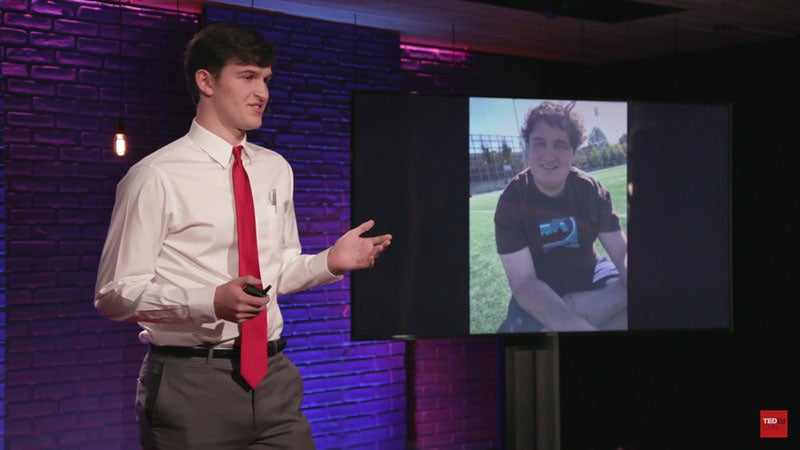
Brett Lewis
While Sean’s talk is about pediatric cancer, Brett’s talk is about peer mentorship and how it can be used to make the world a better place, especially by working with special education students to build their social skills and networks. In his talk, Brett said he joined the Peer Helpers in fourth grade to avoid being in the Chess Club. He ended up working with another student named Henley, who has severe autism, for three years to help him with social and organizational skills and exercise.
“Since we’re being honest, [before meeting Henley,] I was nervous because we as humans have a tendency to feel uncomfortable around people who are different than us,” Brett said in his talk. “Over the years, Henley’s small talk has greatly improved, and it’s not just with me. It’s with every person he interacts with. That’s one of the goals of inclusion programs.”
A Catalyst for More
Just because Sean and Brett have left for the high school does not mean their TED involvement is finished. “[Sean and Brett] are very much still a part of the club,” which is now in its fourth year, Suzan says. “We reach out to previous members to make them mentors and coaches, so they can read drafts and give opinions to current students. We want to keep them involved.”
Brett has teamed up with another classmate, Emily Bebenek, to bring a TED-Ed Club to MBHS. “We’re so proud of them for taking the initiative on this,” Suzan says. “It was their idea. They didn’t want the club to stop here [at MBJH], they wanted to bring it to the high school.” Their paperwork to become a TED-Ed Club was approved over the summer, so Brett and Emily now run the
club together.
As for Sean, he keeps busy talking with high school, college and professional-level athletes on social media to educate and promote #MoreThan4. In his TED talk, he had proposed getting sports teams across the board to wear gold in September for pediatric cancer awareness, the same way many wear pink on their shoes or helmets for breast cancer or don camouflage jerseys for military support.
“We really want to raise awareness first, so our goal is to get gold into sports. You can’t really raise money if people aren’t aware of your cause,” Sean explained this summer. “This year, it’s Joey Bosa [participating]. Next year, its two or three more athletes. Hopefully it’ll add up, and then leagues, teams and players will join in wearing gold. We’ll raise awareness until the people upstairs can see how they should help kids with cancer.”
The idea all started with TED. “It’s been pretty cool seeing other kids’ ideas, and to think that maybe they’ll pursue their ideas like I have,” Sean says. “I’ve got too much going on to help run the new club, but I will probably be in it. I might do another TED Talk, I don’t know.”
“We’ll see,” his mom, Nell, says with a laugh. “[Promoting #MoreThan4] is basically like a full-time job.”
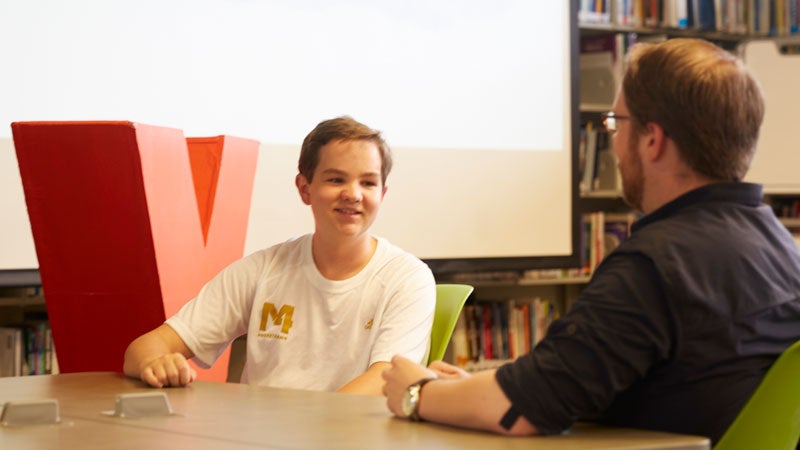
Sean Fredella
#MORETHAN4
While getting ready for the new school year this summer, Sean was also in meetings about a website, promotional video and fundraising for #MoreThan4.
Rally Foundation for Pediatric Cancer: Sean works with the foundation as a “Rally Kid” to raise funds for pediatric cancer research grants. Collectively more than 500 Rally Kids have raised more than $11 million since 2005—some of which goes to Dr. Gregory K. Friedman, MD’s pediatric brain tumor research at Children’s of Alabama.
Adidas: Sean worked with the art directors at Adidas to come up with a logo for #MoreThan4. He took inspiration from athletes like James Harden and Chris Paul, who combine their initials with their jersey numbers to create personal brand logos. Adidas has donated shirts, hoodies, shoes and cleats with the logo to help further the cause.
NFL Cleats: Sean wants NFL payers to wear gold cleats as a part of the My Cleats, My Cause initiative where they can choose any color to support a charitable cause. As a first step, Sean tagged NFL defensive end Joey Bosa of the LA Chargers in a #MoreThan4 photo on Instagram. Joey “liked” the image, the pair started talking about their shared passion for football, and Joey has been a supporter ever since.
The Pros: Sean has gotten other pro athletes supporting #MoreThan4 too. Former Iowa State University defensive lineman Mitchell Myers battled and beat Hodgkin’s lymphoma in 2015 while playing for the Cyclones. Former NBA pitcher and longtime New York Yankees star Andrew Pettitte has pledged to support #MoreThan4 in his retirement.

